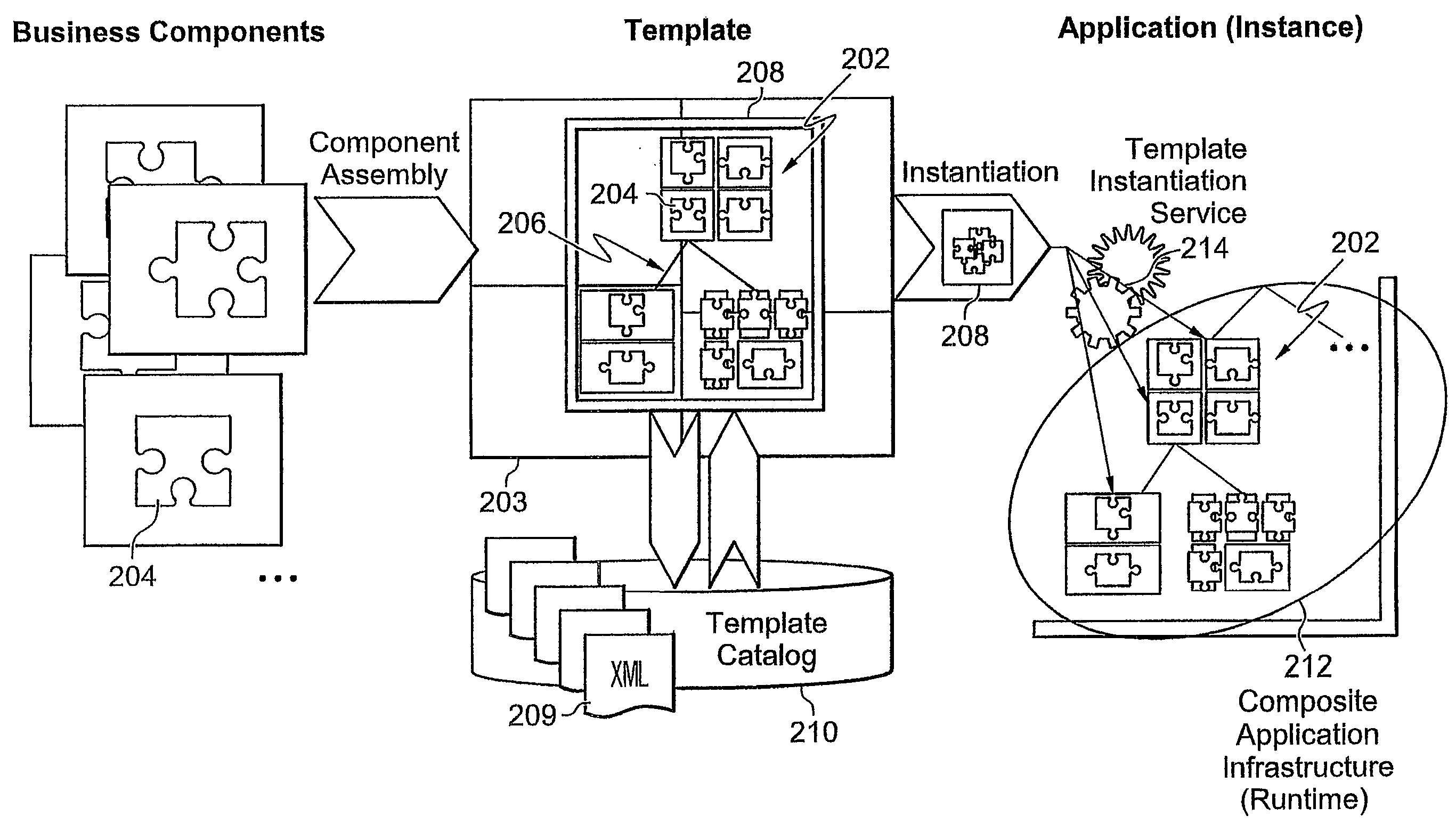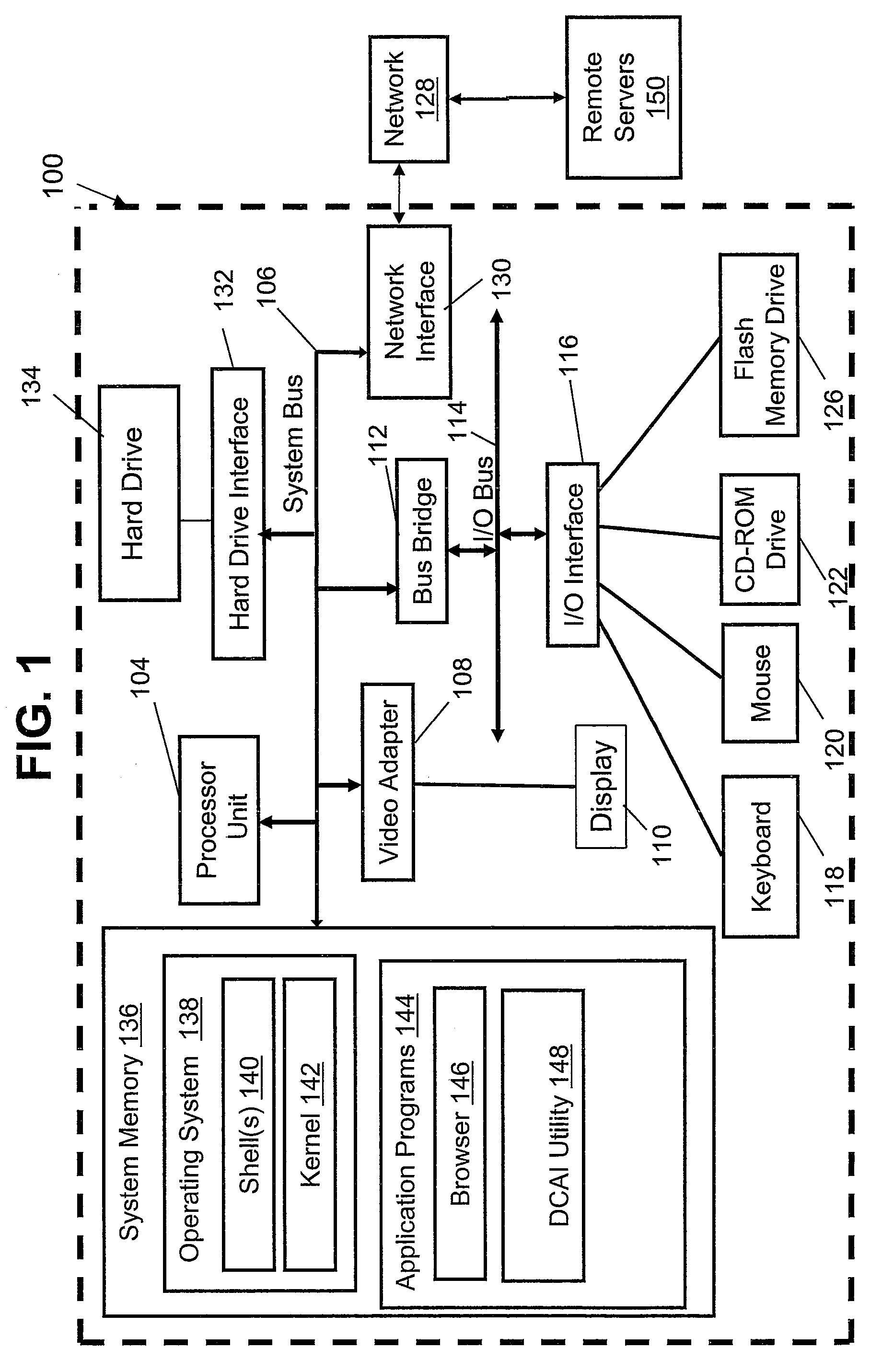Dynamic template instantiation
a template and dynamic technology, applied in the field of dynamic template instantiation, can solve the problems of real resources consumed by real resources in the instantiation process, tedious process of building complex business logic using a set of components,
- Summary
- Abstract
- Description
- Claims
- Application Information
AI Technical Summary
Benefits of technology
Problems solved by technology
Method used
Image
Examples
Embodiment Construction
[0011]In view of the foregoing, a method, system, and computer program product for instantiating a template in a composite application infrastructure are disclosed. A template that describes a composite application having a plurality of application components is created. The template includes a composite application component assembly descriptor which lists each of the plurality of application components of the composite application. The template is stored in a template library. The composite application is instantiated using the template for creating at least one composite application instance. In an application instance registry, one or more composite application instances and instance information related to the one or more composite application instances are registered. The one or more composite application instances are transiently represented in the application instance registry by a respective table entry without creating a real object. The real object is dynamically created. ...
PUM
 Login to View More
Login to View More Abstract
Description
Claims
Application Information
 Login to View More
Login to View More - R&D
- Intellectual Property
- Life Sciences
- Materials
- Tech Scout
- Unparalleled Data Quality
- Higher Quality Content
- 60% Fewer Hallucinations
Browse by: Latest US Patents, China's latest patents, Technical Efficacy Thesaurus, Application Domain, Technology Topic, Popular Technical Reports.
© 2025 PatSnap. All rights reserved.Legal|Privacy policy|Modern Slavery Act Transparency Statement|Sitemap|About US| Contact US: help@patsnap.com



